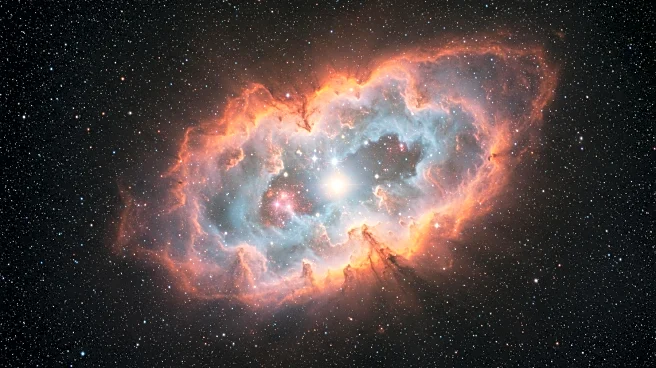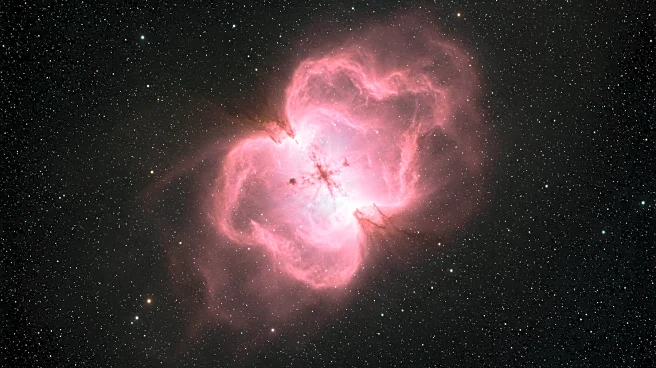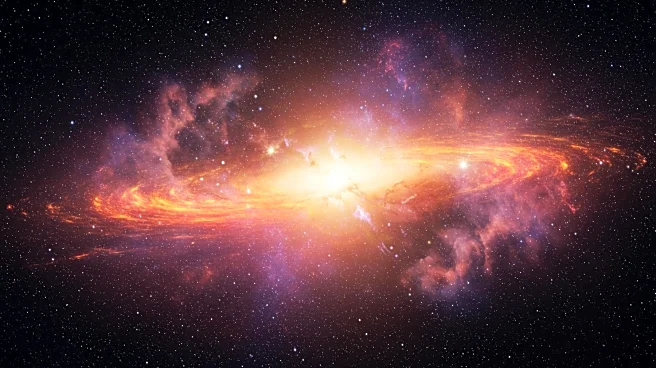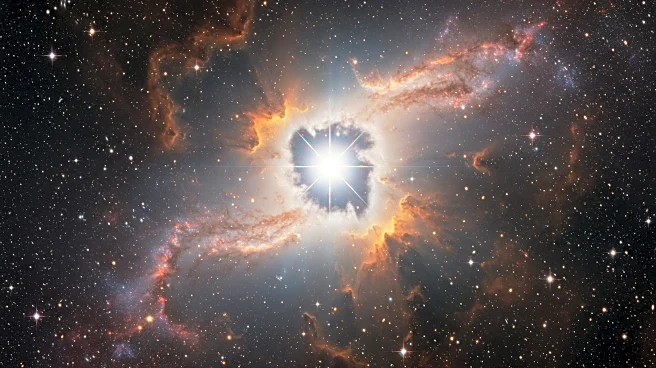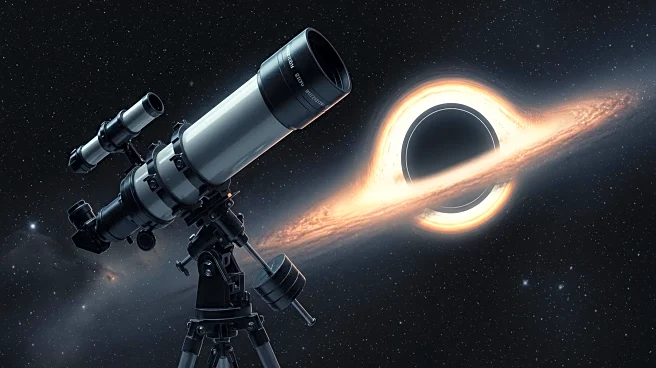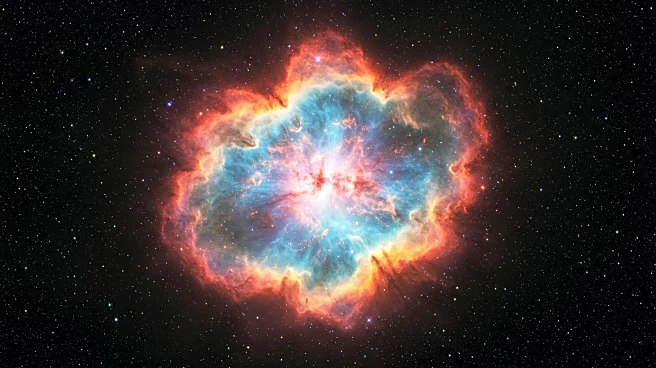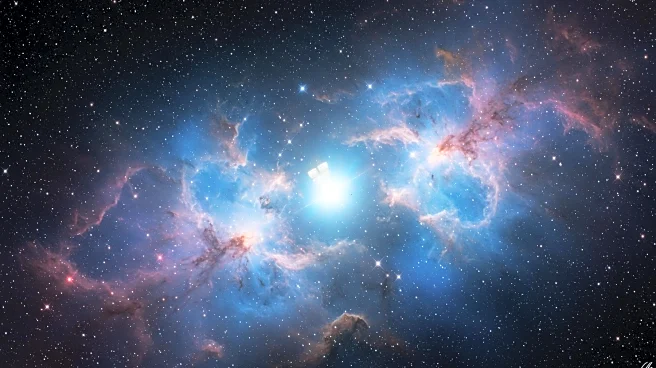What's Happening?
A rare supernova, designated 2021yfj, has provided astronomers with an unprecedented view of a star's inner layers, challenging existing models of stellar evolution. Discovered by Steve Schulze at Northwestern University, this supernova revealed distinct layers of silicon, sulfur, and argon, as well as unexpected traces of helium. The Zwicky Transient Facility in San Diego first detected the supernova, which is believed to have undergone a rare stripping process due to strong stellar winds or interactions with a companion star. This discovery allows scientists to observe the inner shells of a massive star for the first time, offering new insights into the processes leading to a star's explosive death.
Why It's Important?
The ability to observe the inner layers of a star through this supernova provides critical data for testing and refining models of stellar evolution. Understanding the composition and structure of these layers can help scientists better predict the life cycles of massive stars and the mechanisms behind their explosive deaths. This discovery also highlights the importance of advanced observational facilities like the Zwicky Transient Facility in expanding our knowledge of the universe. The findings could lead to revisions in current theories and models, impacting our understanding of stellar life cycles and the formation of elements in the universe.
Beyond the Headlines
The detection of helium in the supernova's spectrum is particularly puzzling, as it should have been consumed during earlier fusion stages. This anomaly suggests that there may be unknown processes at play in the late stages of stellar evolution. The study of stripped stars and supernovae is crucial for improving and validating stellar evolution models, which have implications for understanding the chemical enrichment of galaxies and the origins of elements essential for life.




